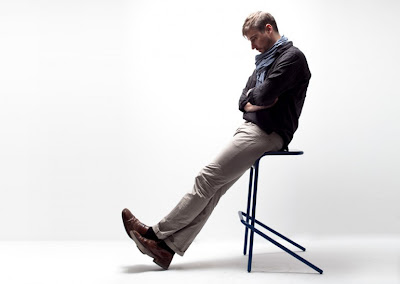Todd Bracher’s work is instantly recognizable (and highly desirable) due to its simple functioning lines, alluring materials, and stunning workmanship. He describes his philosophy in a way that’s as honest and thought-provoking as his designs: “Reduction is very important to me…how we can take away everything and just leave what we need behind. That reveals for us something new, something that’s genuine and truthful, that’s not trying to be anything but what it is.” A native New Yorker, he spent 10 years living and working abroad in Copenhagen, Milan, Paris, and London before moving his practice to Brooklyn in 2007. His depth and breadth of experience ranges from heading up Tom Dixon’s design studio, acting Professor of Design at l’ESAD in Reims France, and serving as Creative Director of the Scandinavian luxury brand Georg Jensen.
Here’s my Q&A with the thoughtful and talented Todd Bracher.
Job description: Strategic Designer.
Why do you do what you do? I love connecting business solutions with design so that the end result is not only for increased company revenue but also a higher level of experience for the consumer. A definite win / win.
How do you break through a creative block? When I am blocked for me this always means that I am lacking information... so immediately I take back to the research and comb through again to see what I can rediscover to help get the ball rolling again...
Education: Yes I have a masters in Interior design and in Furniture design, but for me my education was the 10 years I spent living in Europe, winning, losing, failing, succeeding...
Mentors: Charles Darwin and Hokusai.
World-saving mission: My wife and I are saving the white sharks from extinction!
Office chair: The Supporto (Frederick Scott).
Office Soundtrack:Ideally music I have never heard before. This is the best for me to work with.
Most useful tool: No doubt that would be the mind where 85% of my solutions are born developed and executed.
Favorite space: Dark, natural, quiet, purposeful.
Favorite design object: The Zani & Zani pieces by Enzo Mari.
Guilty Pleasure: Food I have never tasted before.
Underrated: Travel to somewhere I have never been.
Overrated: Travel to somewhere I have already been.
What did you learn the hard way? Design is difficult and you have to be up for the challenge.
Has your work ever gotten you into trouble? No.
If you could cross over into other profession… what would you do? Physicist or Anthropologist.
Dream project: A single engine airplane.
Where’s home? An oddly shaped map I have in my mind.
You can easily sit or recline in this sofa or daybed that is appropriately called Freud for Zanotta in 2002.
Vas Glass Carafe for Italesse inspired by a pelican’s neck.
Stackable steel Alodia stool for Cappellini became available in 2010.
Simple and elegant steel and silicone kitchen utensils (2009) for Eva Trio.
The sculptural Stick Lamps (2009) made with metal tubing and Led lights were inspired by stick insects and deep-sea angler fish.
The Canard table system designed for Horm (2011) is simple and flexible. The four independent metal legs support a variety of structural surfaces and finishes.
T-no1 for Fritz Hansen (2007) is minimal in it's approach. “A surface for function, ribs to support the surface, a spine to hold the ribs and legs to bring the construction off the floor. Nothing more, nothing less” says Todd.
Black Dome lamp for Mater (2007) inspired by how light emanates in a 360 degree pattern. The Dome is made out of spun aluminum by one of the few remaining workshops in Denmark that has master the technique to perfection.
Bracher’s Trea chair (2011) finds inspiration from the movements of an exoskeleton which brings support and comfort to the sitter in both upright and reclined positions.
























No comments:
Post a Comment